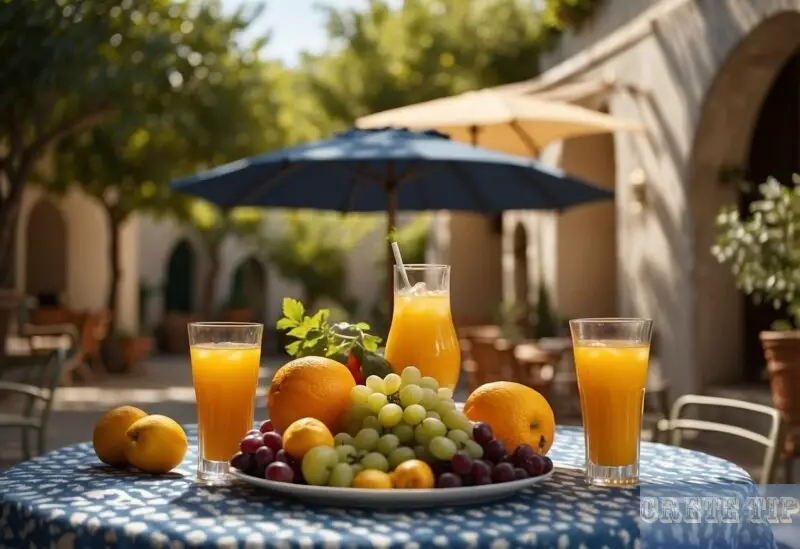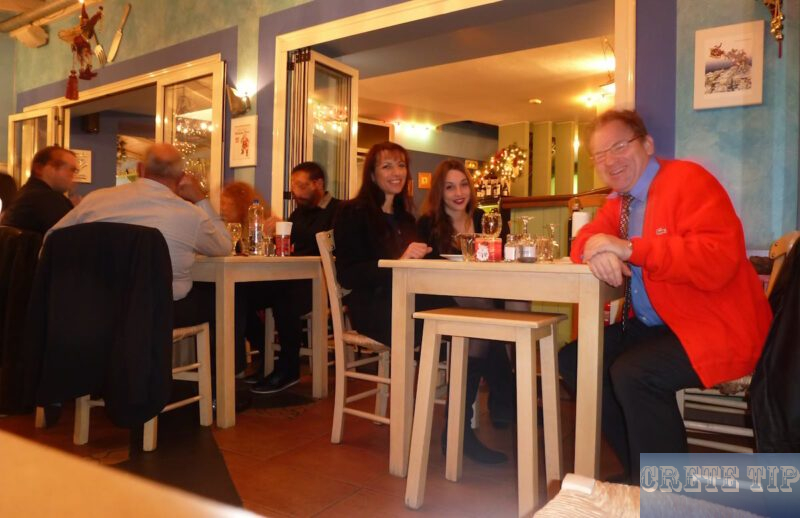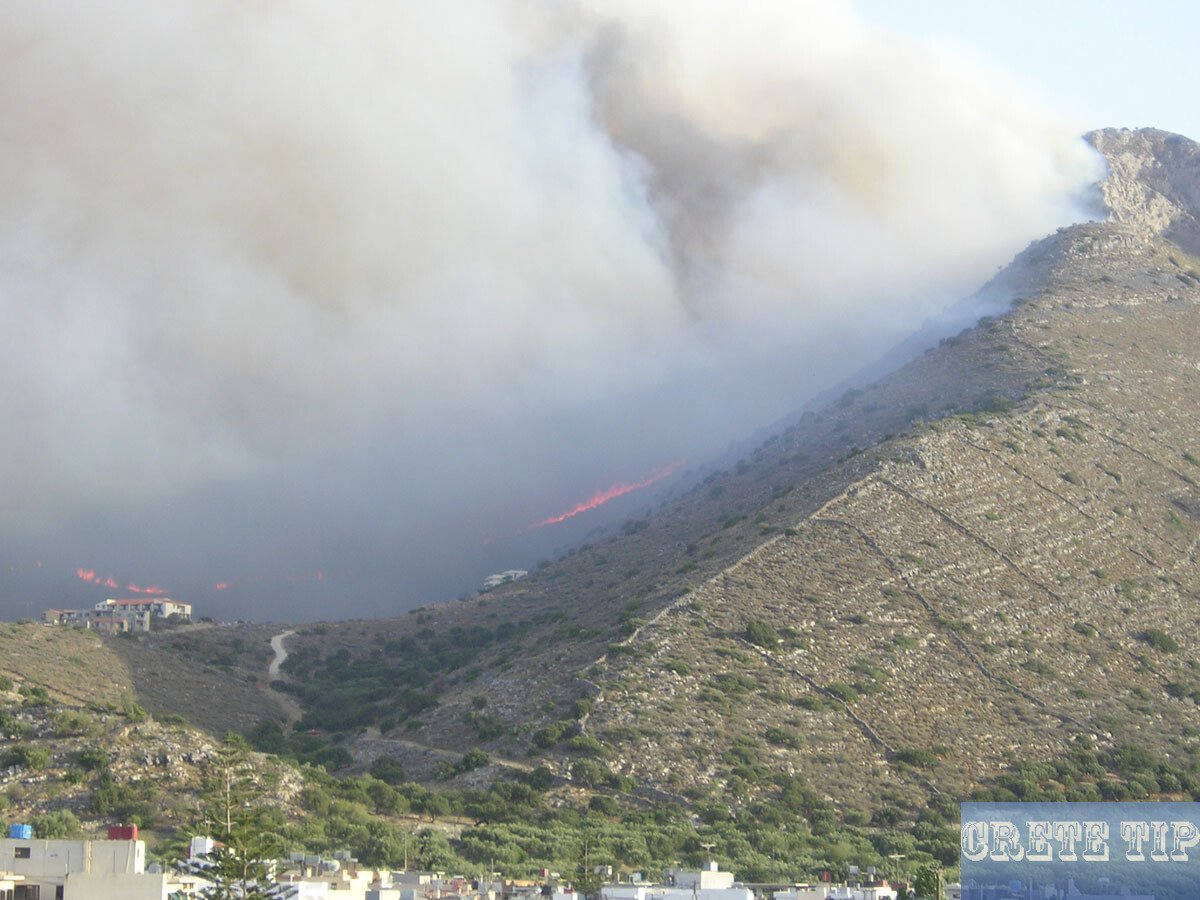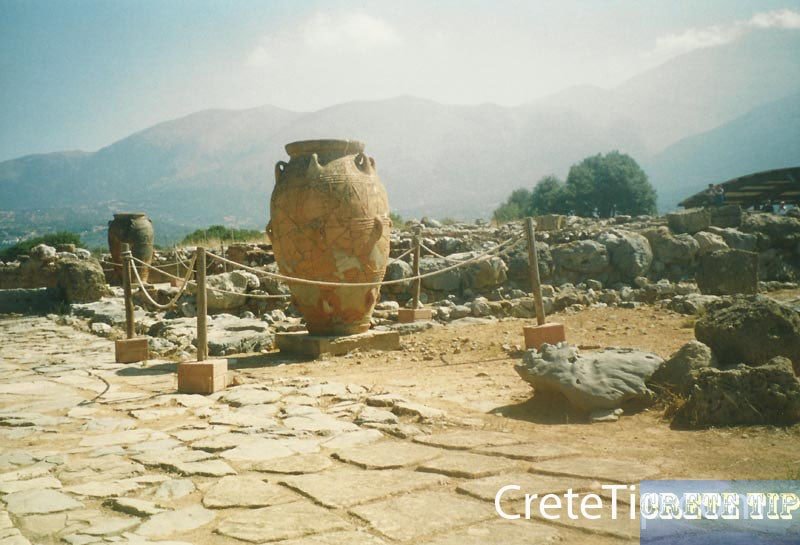
Visit to the Palace of Malia
A turn-off left behind the modern town of Malia on the highway from Heraklion to Aghios Nikolaos ends up in the archaeological site of Malia and the remains of the Minoan city.
History of the Palace of Malia

The original title of the city as well as the Palace of Malia aren’t remembered, their title simply being used from the neighbouring town of Malia.
Greek mythologies make reference that Sarpedon, the brother of Minos and the son of Zeus and Europa, governed there.
Appreciate the fact of a human presence here from the Neolithic time, as can be witnessed from the handful of footprints that were found, which continued constant till 1450 B.C. This is proven by houses from the last years of the Prepalatial time, which were excavated south of the palace, tombs in natural hollows close to the sea and the palace itself which was constructed for the first occasion in 2000 B.C., wrecked in 1700 and rebuilt to be again ruined at last in 1450 B.C. The city furthermore existed for a limited period throughout the Postpalatial phase.
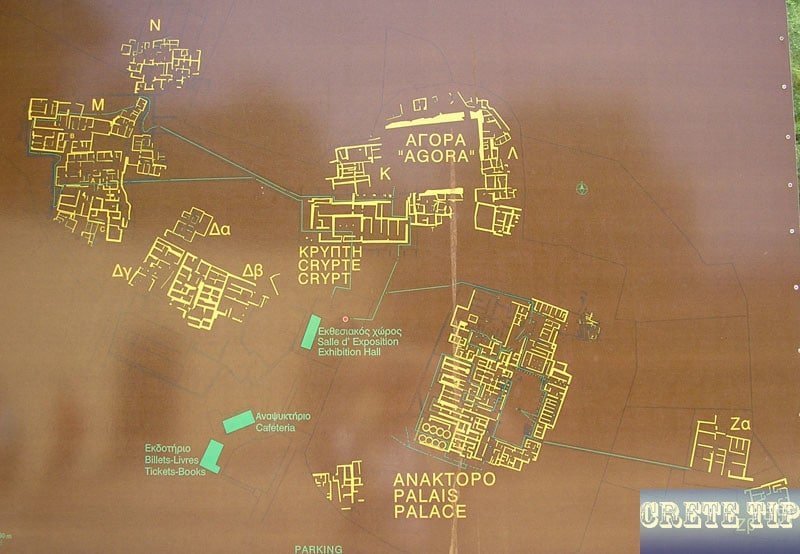
The excavations in the community had been started in 1915 by Mr. Chatzidakis at the location Zourokefali where there had been the walls of a big construction; simultaneously a carved burial-place on the coast was excavated in which sarcophagi were discovered. In 1921 the excavations had been adopted by the French Archeological School which is even now continuing its job.
The Palace of Malia, regardless that its elementary architectural aspects are identical to the other palaces, varies in main focus, in the way of construction and is without brilliance, its facades being created from sandstone as opposed to limestone blocks. There exists a total absence of layered floors, benches, the marble facing of the interior spaces and the rock jambs on the doorways.
Although much less imposing than either Knossos or Festos, the palace of Malia surpasses both in some ways.
For one thing, it is much less visited, so you can wander between the remains relatively undisturbed. In addition, no attempt was made to rebuild the palace after its second destruction, nor were its remains still in use, so its layout is virtually intact.
Also, the excavations are by no means complete and digging is still going on inside and outside the fenced area to the north and west, where an apparently large city is slowly coming more and more to light.
Of the ruins that can be seen today, hardly anything rises more than a metre above the ground, with the exception of the huge pithoi, which have been reassembled and stand like sentinels across the square. The palace itself looks worn and earthy brown and blends almost imperceptibly into the landscape. In addition, the mountains in the background create an impressive setting.

It is also easier to imagine here than in the reconstructed Knossos what a palace by the sea must have looked like in its glory days. The agriculturally fertile plain between the Lassithi Mountains and the sea suggests that a great civilisation once led a tasteful existence here.
As at Knossos and Festos, there was also an earlier palace here from around 1,900 BC, which was destroyed by an earthquake around 1,700 BC.
The remains visible today are from the palace that was built over it as a replacement. This palace was used until around 1,450 BC, when it was destroyed forever.
At this site the famous golden pendant with two bees was found, which can be seen in the Archaeological Museum of Iraklion and on every local postcard.
It was probably part of a looted treasure and the remaining pieces are now in the British Museum in London as the Aegina Treasure. The beautiful axe with the leopard’s head in the museum of Iraklion was one of the other treasures found near Malia.
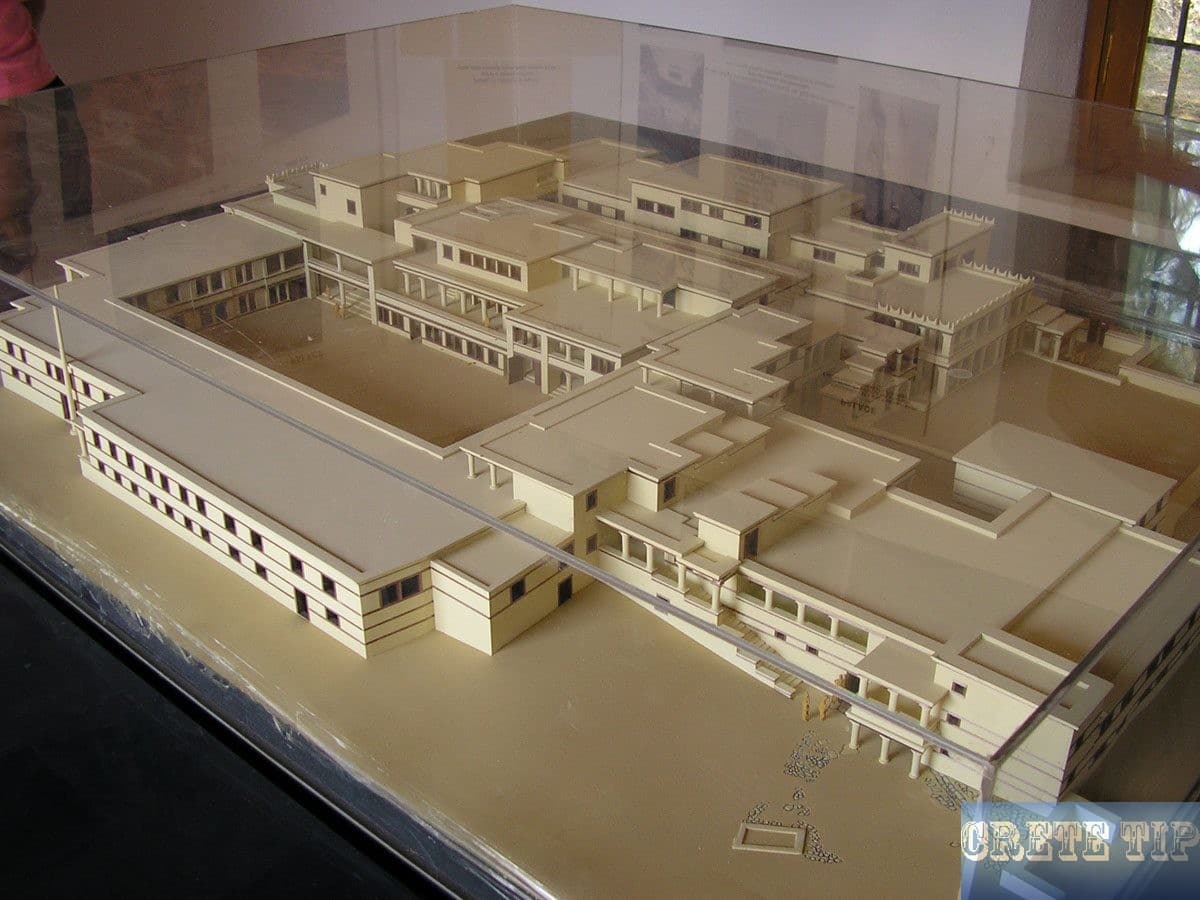
The palace grounds
The stone-paved Central Court features a processional corridor which divisions at the end which approaches 8 circular structures which could be water tanks or granaries. Right here is the access to the west wing comprising a double door which has a stone-paved corridor and a covered narrow, long place for the guard.
In the southeast corner, west of the entry, is a tiny throne. In the centre of the Central Court is a small altar while on its southwest end a significant religious monument was discovered, a huge, round rock ‘Kernos’ which has a hollow in the middle and 34 smaller holes round the area. It was utilized as an offering desk for assorted fruits as well as other items for the deity.
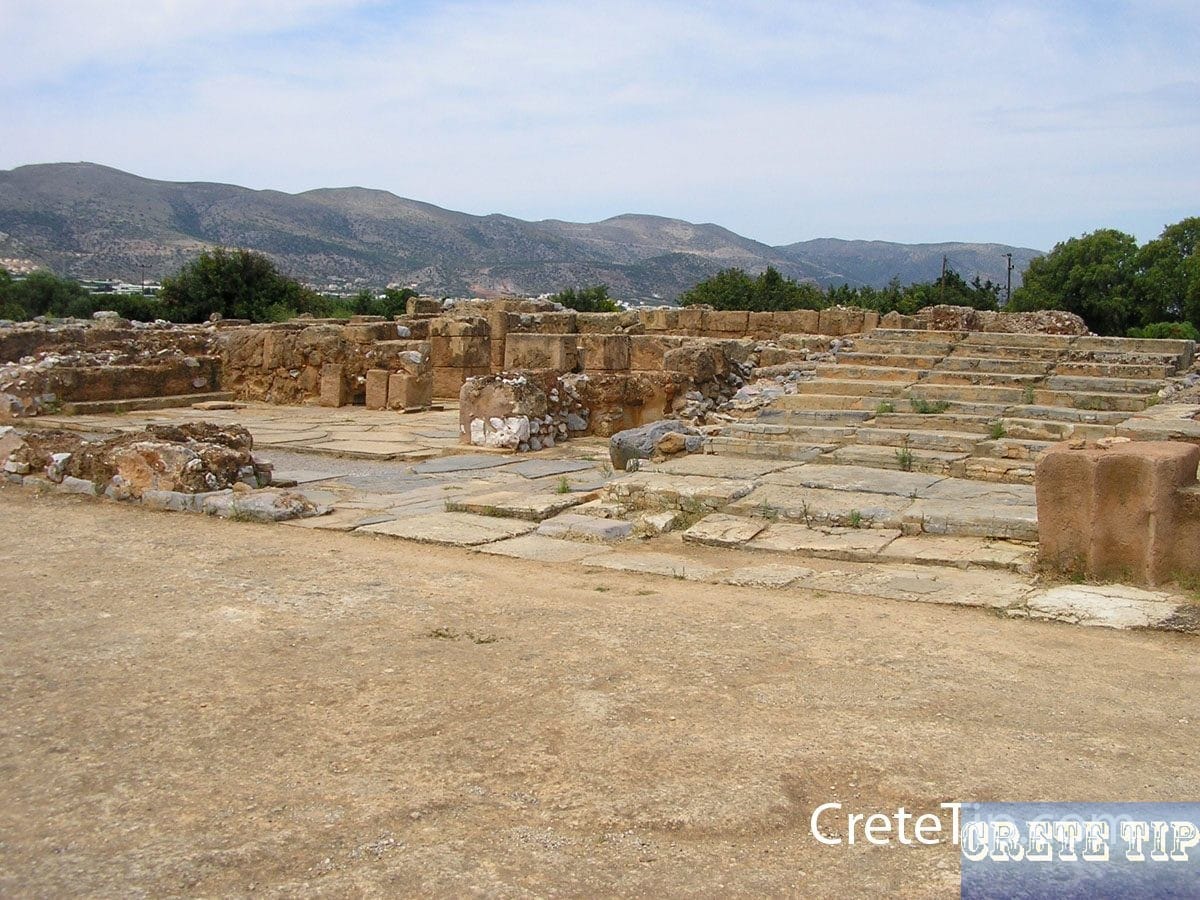
The holy apartments were in the west wing of the palace, following a line of storerooms. In the northwest end of the Central Court was on the east side and directly a covered place some sort of Loggia with access to the Central Court, at the rear of which was a columned partition and in the middle a throne or altar where the Priest-King made sacrifices to the goddess, while folks observed the ritual from the Central Court.

On the eastern edge of the Central Court of the palace were narrow, long storerooms in front of which were corridors and a gallery along the whole size of the section which were strengthened on columns and square piers. The Southeast access to the palace was on the southern area of the storerooms.
The north side of the Central Court had a portico much like that on the east edge and right away behind it a big hypo style hall with 6 pillars which backed the roof. West of the hall, after a stone-paved corridor which connects the Central Court to the North Court, is an unusual, square construction having an oblique placement, while to the west is the Keep, which adopted its title from a square room having solid walls.

Even more north had been storerooms, while the northeast area of the palace was built with additional storerooms. Between this pair of complexes of storerooms was an additional entry from the eastern neighbourhoods of the city. The western side of the storerooms was the north entry, from which a stone-paved street went down to the harbour.

The most significant structures in the palace were in the northeast wing where the Royal Apartments were, which includes a flat hall in the heart having 4 openings and a hypo style gallery with 5 columns in front. In the south a gallery ended in a compact room of spiritual style, verified by the discovers of remnants of sacrifices, clay rods, tables with hieroglyphic letters as well as seals.
To the west of the hall, was an anteroom along with a lustral basin. In the nearby place the prominent ‘Acrobat’s Sword’ was discovered, gilded with a pommel, probably the most significant discovers from the excavation.
Ancient city
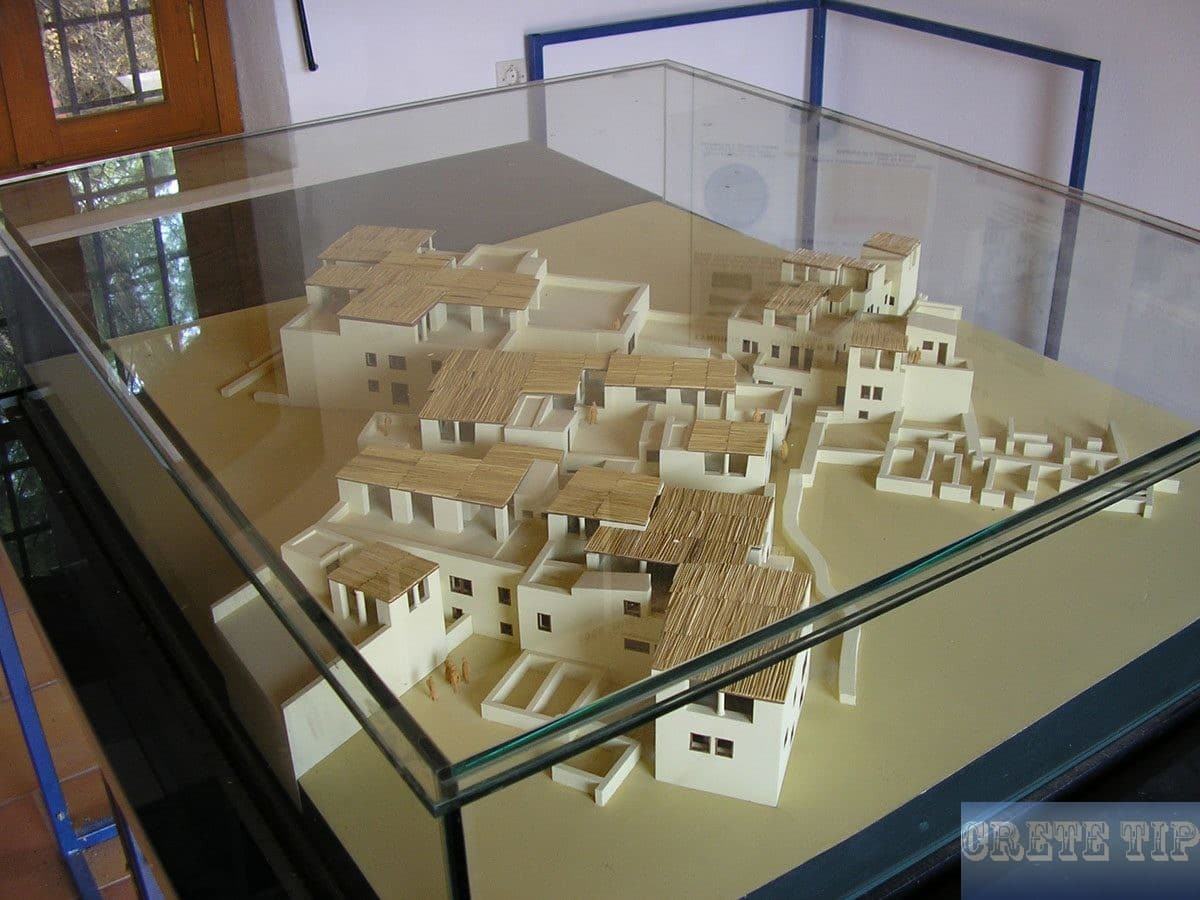
The old city of Malia was constructed surrounding the palace and had an area of roughly 0.4 square miles. The buildings of the old city weren’t constructed right next to each other, however, in neighbourhoods which were linked by roads. The biggest neighbourhood excavated was approximately 110 yards (ca. 101 m) northeast of the palace, right and left of the street which ended at the harbour. The buildings were of different dimensions having halls, storerooms, baths and corridors. The eastern neighbourhoods of the city must have been the most prosperous, as is demonstrated by Building A7 which is remarkably constructed and contains more homes than the others.

The graveyard of Malia was at the location ‘Chrysolakkos’, 550 yards (0.5 km) towards the north. The numerous discovers are incredibly remarkable and aren’t simply from burials even so the praise of the dead as is proven by the tables of offering, as well as an altar from the Protopalatial time for sacrifices to the Great Goddess who governed the dead. The discovers which be noticeable consist of numerous vases, gold items and jewellery of outstanding craft, topped by the gold pendant of conjoined bees.
Most interesting finds are displayed in the museum of Aghios Nikolaos.
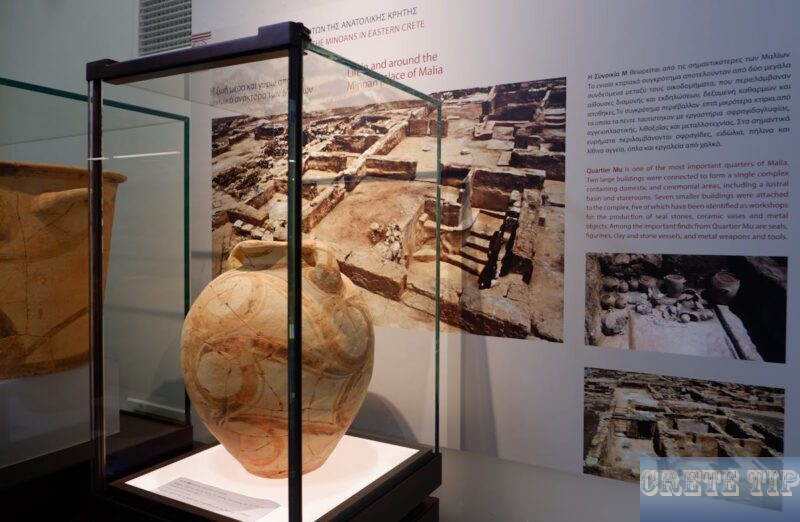
Visit
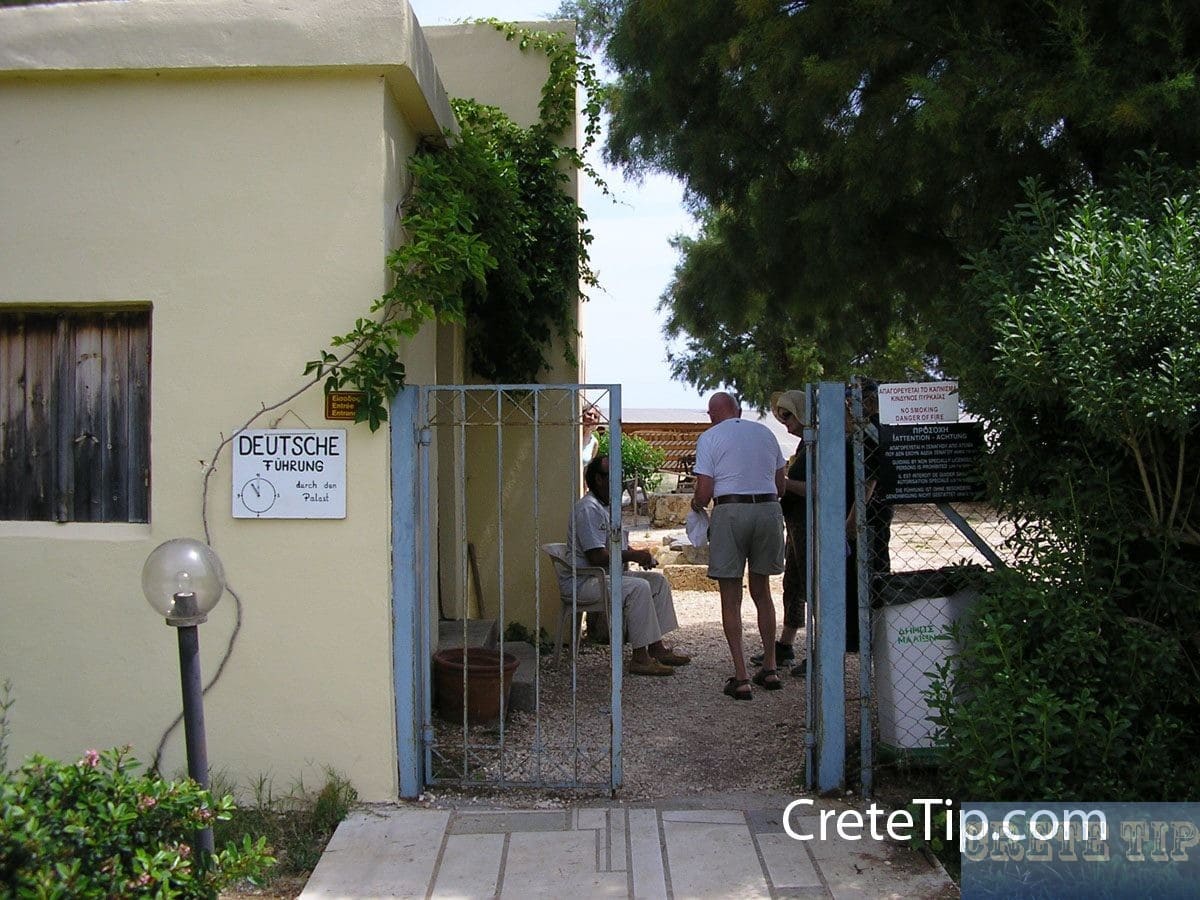
The Palace of Malia is a MUST for every visitor of Malia. However, was less magnificent compared to either Knossos or Festos, the Palace of Malia somewhat outshines both. To begin with, it’s quite a lot emptier, and you can walk among the remains in comparable harmony. And while no remodelling has been experimented with, the palace never was re-occupied following its last destruction, so the ground-plan is almost unchanged. The excavations are in no way finish; inside and beyond the fenced location to the north and west, digs continue to be happening, as a surprisingly large city arrives gradually to sunshine.
The Palace of Malia can even be reached on foot within 40 minutes from the centre of modern Malia. With a scooter, quad bike or hired car, it is a short hop, and it operates also a bus (even from Heraklion or Aghios Nikolaos). Close to the palace is also the magnificent ‘Tropical Beach’ (Potamos) of Malia.
More Pictures

Video
Drone view of the excavation area of the Palace of Malia.
Directions to the Palace of Malia
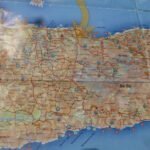
Click here: Directions Palace of Malia.

